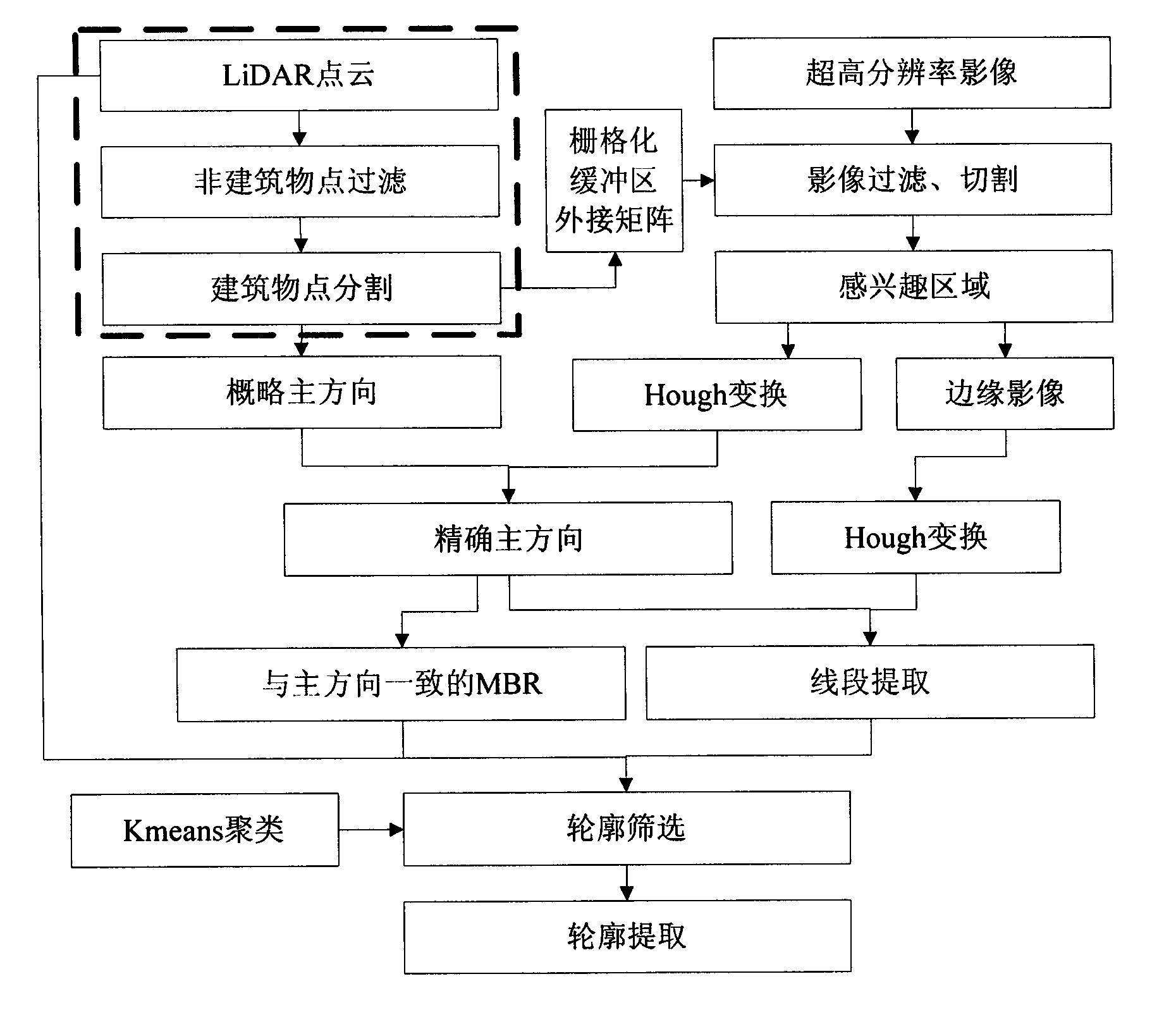Method for extracting contour of building by integrated images and LiDAR data
A data extraction and building technology, applied in image data processing, image analysis, photo interpretation, etc., can solve the problems of low resolution, insufficient fineness and low precision of building outlines, and achieve the effect of high positioning accuracy
- Summary
- Abstract
- Description
- Claims
- Application Information
AI Technical Summary
Problems solved by technology
Method used
Image
Examples
Embodiment
[0018] The flow chart of the method for integrating images and LiDAR data to extract building outlines is shown in the accompanying drawing, including the following steps
[0019] (1) Pretreatment
[0020] Separate the building points and non-building points in the LiDAR point cloud, and divide the building points to form a point set for each building. The separation of the point cloud first eliminates most of the trees based on the two reflection data; then detects the terrain to obtain the DEM through the linear prediction method, and deletes the ground points to obtain the building points with noise; finally, eliminates the fragments through the area control to obtain building points. Segmentation of building points can be done using the region growing method introduced in (Sampath and Shan 2007). The full automation of the preprocessing link is still technically difficult, and the general strategy is to carry out some manual editing on the basis of the automatic processi...
PUM
 Login to View More
Login to View More Abstract
Description
Claims
Application Information
 Login to View More
Login to View More - R&D
- Intellectual Property
- Life Sciences
- Materials
- Tech Scout
- Unparalleled Data Quality
- Higher Quality Content
- 60% Fewer Hallucinations
Browse by: Latest US Patents, China's latest patents, Technical Efficacy Thesaurus, Application Domain, Technology Topic, Popular Technical Reports.
© 2025 PatSnap. All rights reserved.Legal|Privacy policy|Modern Slavery Act Transparency Statement|Sitemap|About US| Contact US: help@patsnap.com



